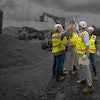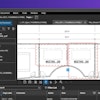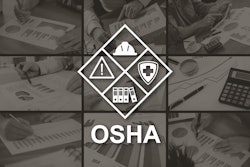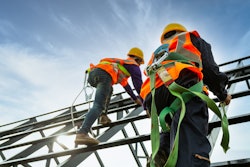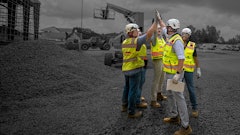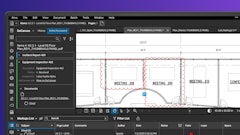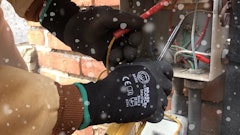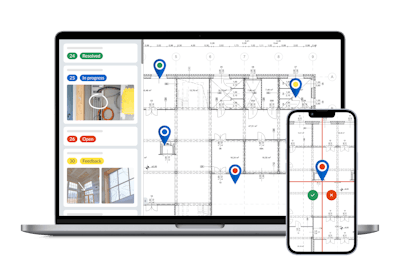
Most construction sites still operate with a patchwork of tools—updates shared via messaging apps, paper checklists and cloud folders that are often days out of date. With information fragmented and delayed, artificial intelligence (AI) feels disconnected from the realities of daily work. Until data is current, complete and centralized, AI remains a theoretical promise rather than a practical asset. It’s a missed opportunity in an industry where 20% of projects run late and 80% go over budget — outcomes directly linked to data gaps.
Other industries demonstrate how quickly that can change. A decade ago, agriculture looked much the same: seasonal, equipment heavy and driven by gut instinct. Then farmers began sampling soil, logging yields, and flying drones. Once those structured data points piled up, AI models informed growers exactly when to irrigate or harvest, squeezing every ounce of value from each acre. Structured inputs turned raw field data into precise, daily guidance.
Construction can follow the same path. The key to unlocking AI's potential lies in utilizing a single platform that standardizes processes, empowers teams to collaborate, and captures and organizes data, all in one place. Before AI can assist in construction, the right digital tool must be in place.
AI Can’t Run on Fragmented Or Paper-based Data
Before AI can elevate jobsite performance, teams must first bring their workflows together in one digital environment. Implementing structured digital processes is the essential first step toward making AI usable in everyday construction work.
This means:
Working from the same plans, in the same place – Choose the right software, align on standardized workflows and ensure the whole team is trained and confident using it.
Connecting site and office teams – Use shared systems that sync in real time, so everyone — from the field to HQ—is working with the latest updates in a single project space.
Centralizing project data in the cloud – Ensure seamless access, live collaboration and easy analysis, no matter where your team is based.
Once this digital foundation is in place, project data becomes usable — clean, consistent and complete. That’s when AI can begin to identify patterns, flag risks and support faster, more informed decisions.
But getting the data in the right place is only part of the equation. What matters just as much is how that data is captured.
Standardized Data Capture: From Field Activity to Organized Oversight
The next step is making sure that the data itself is structured from the start. AI can only work with what it understands — and for that, site activity needs to be documented in consistent, clear and connected ways.
In practice, this looks like:
Photos and videos pinned to digital floor plans, automatically tagged with timestamps and location for accurate context.
Predefined digital forms and templates that guide on-site teams to consistently collect and report the right information.
Centralized document management, with all workflows, approvals and records stored in one place for easy access and tracking.
From Structured Data to Visual Clarity
The foundation of AI-ready construction workflows is standardized, structured data. But not all data is created equal — photos and videos captured at the right moment, from the right place, with the right context, are among the most valuable records a team can produce. When tied to digital floor plans, timestamped, and tagged by location and trade, visual evidence becomes more than a record — it becomes the basis for smart decision-making.
That’s why forward-thinking teams are integrating visual capture into their daily routines, building up a consistent, project-wide visual history.
360° Reality Capture: Building an AI-Ready Visual Archive
In addition to standard photo and video capture, features like PlanRadar’s SiteView take visual documentation further. A helmet-mounted camera records site walks in 360°, automatically mapping imagery onto floor plans using an AI-powered platform. This creates a complete, structured visual log of how the site evolved over time.
Today, that means teams can compare progress, check what’s behind walls, or validate installations — without ripping anything open. It also helps prevent rework, supports faster issue resolution, and maintains compliance with clear, verifiable records.
Tomorrow, this dataset becomes fuel for AI tools. Consistent 360° captures — collected in the same format, tagged the same way — allow AI models to detect deviations, spot patterns and forecast delays before they become costly. Structured visual documentation isn’t just good practice — it’s how construction projects move from reactive fixes to predictive, data-driven delivery.
Where AI Can Actually Help You: Inspiring Stories
If "AI" still sounds like Silicon Valley jargon, consider these builders who started exactly where you are, pen‑and‑paper checklists and endless email threads, and are now saving days each month through simple, structured data capture.
From Complexity to Clarity: How Zachry Construction Uses AI for Smarter Scheduling
Structured data is the backbone of any AI workflow. Zachry Construction proved this when it adopted ALICE Technologies' generative‑scheduling engine. Years before rollout, Zachry standardized how takeoffs, crew rates and weather delays were logged across projects. Because these inputs now share one format, ALICE can ingest them and generate hundreds of buildable sequences in minutes.
What once required a full-day workshop is now a live "what‑if" session: planners adjust a resource or constraint, and the schedule updates in real-time. Early trials surfaced sequences that trimmed the critical path by up to two weeks and highlighted risks before ground was broken. The lesson is clear: without consistent quantities, rates, and calendars, even the best AI stays silent. With them, it becomes a second planning team — fast, tireless and fact‑driven.
Spot Trouble Early: Skanska USA’s Transformation of Safety Data
For years, Skanska USA logged safety observations, toolbox talks, and near‑miss reports into siloed PDFs and spreadsheets, valuable data that rarely surfaced beyond monthly meetings. The contractor created a central safety warehouse, standardizing hazard categories, severity ratings and jobsite metadata for every record. With a clean data model in place, analysts produced reliable dashboards and trend maps, rather than static summaries.
Building on that structure, Skanska launched "Safety Sidekick," a generative AI chatbot trained solely on the firm's incident history and best-practice library. Field supervisors now type plain‑language questions, "What were the top fall hazards on the garage deck last month?" and get instant answers, complete with inspection excerpts and toolbox‑talk scripts. Skanska reports a 40% reduction in time spent preparing toolbox talks and increased day-to-day engagement with site safety protocols nationwide.
From Fragmented Schedules to AI-Driven Forecasts
For the portfolio team at a global data center developer, scheduling reviews had become a matter of guesswork. Each of the 15 concurrent builds across North America, Europe, and Asia was managed in a separate Primavera P6 schedule or Microsoft Project file. Updates arrived quarterly, and staff spent days stitching together spreadsheets just to determine where things stood. Frustration was high, and decisions lagged behind field reality.
The fix started with structure. All scheduled exports were funneled into Foresight and mapped to a single activity taxonomy. Weekly P6 APIs replace annual uploads, consolidating scattered files into a single, clean dataset. With that foundation in place, Foresight’s AI forecast engine, trained on Foresight's performance trends, delivered probabilistic finish dates and early-warning delay signals. Six months later, executives met monthly (instead of ad hoc), and reporting costs dropped 90% (from $2 million to $200,000). Proactive resequencing also avoided roughly $100 million in delay costs. Structured data did the heavy lifting; AI simply made it visible.
Lessons from the Field
The farming industry didn't start with AI. It began with sensors, GPS systems and standardized planting data. Once farmers were willing to lay that foundation, AI could optimize yield, cut waste and predict crop health.
The comparison to construction is more than a metaphor. Both industries deal with variable field conditions, weather, labor fluctuations and high-value assets. Where AgTech succeeded, it did so by first investing in measurement and consistency. Drones, soil monitors and yield maps came before intelligent recommendations.
Construction is no different. If we digitize and standardize data now, we'll be able to unlock forecasting, automation and optimization in the years ahead. Structured data is the new soil.
Prepare the Ground, Reap the Rewards
Getting started with AI doesn't mean overhauling your whole tech stack. It means giving your existing work the structure it needs to become searchable, analyzable and eventually automated.
Contractors know what it's like to dig themselves out of a complex situation. By implementing structured digital workflows, you can begin to improve your situation. And with trustworthy, private AI layered in, you reach a better place: faster decisions, fewer delays and less time lost to paperwork.
The shift doesn't need to be dramatic, but it does need to be deliberate. Start by identifying one workflow that frustrates your team. Where are delays stacking up? Where are the mistakes being repeated? Solve that one process, and you've proven AI's potential.
Take one process. Digitize it. Structure it. That's the start. And that's how you prepare the ground for AI to do its job.



